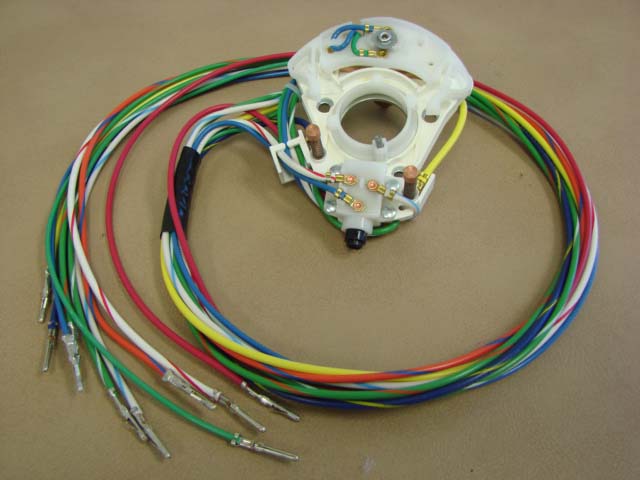

- #66 mustang turn signal switch manual#
- #66 mustang turn signal switch series#
- #66 mustang turn signal switch windows#
The 302 small block V8 was replaced with a 4.2 L (255 cu in) V8, rated at 118 hp (88 kW 120 PS), with a 3-speed automatic transmission.
#66 mustang turn signal switch manual#
However, the four-speed manual was still standard. For the 1980 model year only, the 2.3 L four-cylinder Turbo engine was available with an optional three-speed automatic transmission. Interior Cobra-specific parts on all 1979-1981 Cobras included "Engine Turned" dash bezels and three COBRA emblems - one in each door panel and one on the passenger side dash bezel.ĭrivetrains in the 1979 model year consisted of the 140 cu in (2.3 L) four-cylinder Turbo engine, rated at 131 hp (98 kW 133 PS), with a Borg-Warner four-speed manual transmission or the small block 302 cu in (4.9 L) V8 (marketed as 5.0 L), rated at 139 hp (104 kW 141 PS), with a 4-speed manual overdrive transmission or a 3-speed automatic transmission. The exterior trim on both the 19 Cobras was black, including the door handles, key locks, antenna, and sail panels.
#66 mustang turn signal switch windows#
Graphics included belt-line stripes, a redesigned hood decal, and "COBRA" decals on both the side quarter windows and the rear spoiler. The 1980 Cobra (5,550 produced) and the 1981 Cobra (1,821 produced) received a new front bumper and air dam with fog lights, non-functional cowl-type hood scoop, and rear spoiler (all carried over from the earlier Pace Car replicas).

Rear spoilers were not included on the 1979 models, as they made their debut on the mid-year introduction of the Indianapolis 500 Pace Car replica. The Cobra hood decal was optional for 1979. All 1979 Cobras came equipped with a small, center mount non-functional hood scoop (to provide clearance for the air cleaner due to the 2.3L Turbo extra height). Color-coordinated dual pinstripes in the wraparound body-side moldings and bumpers, as well as COBRA decals on the doors, were standard. The door handles, door locks, antenna, and roof drip rail were bright. The 1979 Cobra (17,579 produced) featured a black grille, trim, and moldings (except the sail panels that were painted body color), as well as black lower body paint. The Cobra appearance package also made its debut in 1979 and would continue through both the 19 model years.
#66 mustang turn signal switch series#
The wheelbase was 5 in (127 mm) shorter than the Fairmont/Zephyr series at 100.5 in (2,553 mm) (nearly the same as the outgoing European Ford Capri and over 4 in (102 mm) longer than the Mustang II).Ĭobra 1981 Ford Mustang Cobra hatchback Two trim levels were available: the base model and the more luxurious Ghia model. "Ford built the 1979 Mustang around a platform it would share with more humble cars in the Lincoln-Mercury-Ford corporate family in order to keep development and construction costs down." Body styles for the Mustang included a 2-door sedan ( coupe) and 3-door sedan ( hatchback). This chassis was "Ford's initiative to build a one-size-fits-all car to serve as a two-door sports car and a four-door family car" with its initial use by the larger Ford Fairmont and Mercury Zephyr twins that debuted in the 1978 model year. The 1979 model year Mustang was based on the Fox platform. Production ended with the introduction of the fourth-generation Mustang (SN-95) for the 1994 model year.ġ979–1982 1979 Ford Mustang notchback coupe Enthusiasts group the generation into two segments: the 1979–1986 cars, with their quad headlight arrangement, and the 1987–1993 cars, with their aerodynamic composite headlamps and front fascia styling. However, company executives were swayed by consumer opinion and the rear-wheel drive Mustang stayed, while the front-wheel drive version was renamed the Ford Probe. It underwent updates for the 1987 model year and seemed destined for replacement with a front-wheel drive Mazda platform.


It evolved through several sub-models, trim levels, and drivetrain combinations during its production life. Built on Ford's Fox platform, it is commonly referred to as the Fox body Mustang. The third-generation Mustang was produced by Ford from 1979 until 1993.


 0 kommentar(er)
0 kommentar(er)
